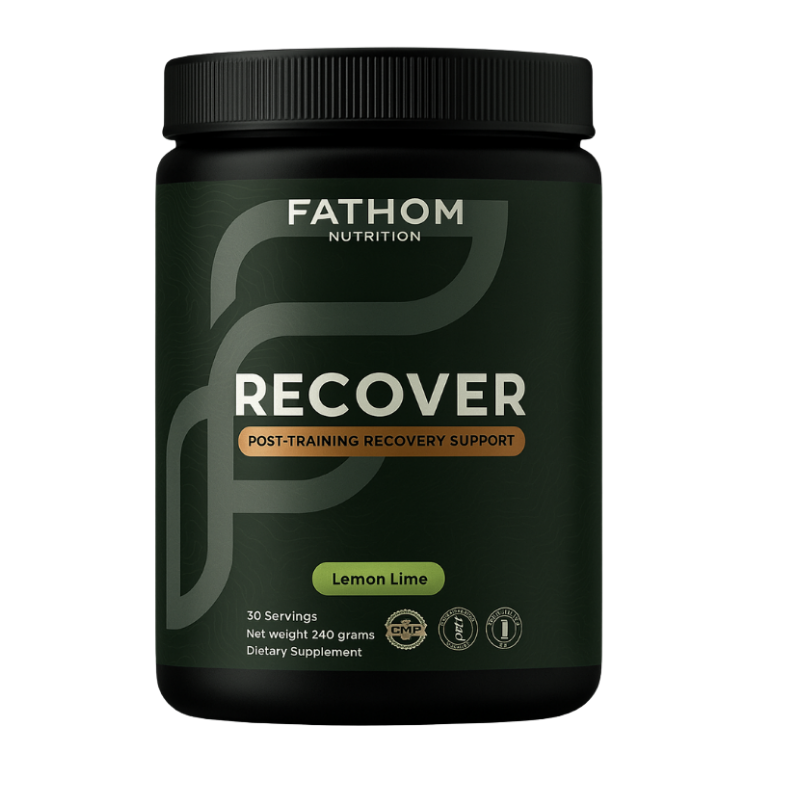What Is HRV?

There’s a pattern I’ve seen over and over again in athletes—whether they’re training for a sub-three marathon, competing in CrossFit, or deep into a strength cycle. The harder they train, the more they start chasing numbers. Weight on the bar. Pace on the watch. Volume, intensity, duration. The metrics pile up.
But the one number that tells you whether your body is ready to perform—the one that has nothing to do with effort and everything to do with capacity—is the one most people don’t pay attention to.
Heart Rate Variability.
HRV is not just a trend or another wearable stat to toss into your feed. It is arguably the most sensitive and accessible marker of recovery and systemic readiness that we have. And if you understand how to use it, it becomes more than a number. It becomes a conversation between your nervous system and your training decisions.
This article is about that conversation.
Let’s unpack why HRV matters, what it actually tells you, and how you can apply it—not just to avoid burnout, but to intelligently push your limits while expanding your capacity for adaptation.
What Is HRV?
Heart Rate Variability, or HRV, is a measure of the variation in time between successive heartbeats. That’s it. It’s not your heart rate. It’s the space between the beats—what’s called the R-R interval. And that space, counterintuitively, should not be constant.
A healthy heart does not beat like a metronome. It adjusts from moment to moment based on your internal state and external environment. That variability is governed by your autonomic nervous system, specifically the balance between sympathetic (fight or flight) and parasympathetic (rest and digest) tone.
When your HRV is high, it indicates that your body is in a state of balance and readiness. You are more parasympathetically dominant, more resilient, more capable of adapting to the next stressor. When HRV is low, it’s a sign that your system is under strain—either from training, poor sleep, psychological stress, or illness.
It is not just a recovery metric. It’s a window into your internal physiology, showing you whether your system is in a state of coherence or compensation.
The Science Behind HRV and Adaptation
HRV is deeply connected to one of the most fundamental training principles: the dose-response relationship. You stress the system, allow it to recover, and over time it adapts. Simple in theory. But without insight into how the body is responding to stress, the model breaks down.
This is where HRV fills the gap.
Research has consistently shown that HRV-guided training—adjusting intensity and volume based on HRV trends—can improve aerobic performance, reduce risk of overtraining, and enhance overall recovery. Studies on endurance athletes, strength athletes, and team sports players all point to the same conclusion: your body doesn’t lie. If HRV is dropping, something is off.
In practical terms, HRV gives you a daily readout on your autonomic state. It’s not a lagging indicator like soreness or even resting heart rate. It’s real-time physiology. And that makes it incredibly useful for one thing above all: decision-making.
Should I push hard today?
Can I tolerate back-to-back threshold sessions?
Am I recovering fast enough from this new block of strength training?
HRV won’t answer those questions directly. But it gives you a signal. And over time, if you pay attention, it becomes clear how that signal maps onto performance and readiness.
HRV Is Not Just About Avoiding Overtraining
It’s easy to assume HRV is just a red flag system. When it drops, pull back. When it rises, go hard. But that’s not how physiology works. HRV is not binary. It’s dynamic. And using it well requires context.
A transient drop in HRV is not a problem. In fact, it’s often a sign that the system is responding to stress. What matters is what happens next. Do you rebound within 24 to 48 hours? Or do you stay suppressed?
This is where trend tracking becomes more important than any single number. A single-day dip in HRV after a hard lift or long run isn’t a red flag. A consistent downward trend over a week is.
Likewise, a sharp increase in HRV can be misleading if it coincides with a sudden decrease in performance, motivation, or resting heart rate. Sometimes this pattern—high HRV but low energy—indicates parasympathetic overreaching, a state where the system is so downregulated that even moderate stressors feel like too much.
The point here is nuance. HRV doesn’t give you answers. It gives you a framework. A way to ask better questions. A way to engage with your training in a more intelligent, adaptive way.
How to Actually Use HRV in Training
The practical application of HRV comes down to one core habit: measurement.
To make HRV actionable, you need to track it daily, ideally first thing in the morning under consistent conditions. The tool you use—WHOOP, Oura, HRV4Training, Elite HRV—matters less than the consistency with which you use it.
Measure it the same time every day
Measure it at rest, before caffeine, light, or stress
Track it in a system that gives you access to trends over time
Once you’re collecting data consistently, start mapping it against your training.
What happens to your HRV after hard intervals?
How does sleep affect next-day readiness?
Do you rebound more quickly from strength sessions or endurance work?
Over time, you’ll begin to notice patterns. Some of them will be obvious. Others will surprise you. Maybe your HRV drops more after strength training than you thought. Maybe your best race performances come after a week of stable, not elevated, HRV. Maybe your system responds better to two hard days in a row followed by full rest than to alternating volume.
This is where HRV becomes more than just data. It becomes dialogue. With your nervous system. With your recovery capacity. With your life.
The Real Value of HRV: Honesty
Most athletes are bad at rest. We are wired to push. To override. To believe that fatigue is weakness and that adaptation always comes from doing more.
But the truth is that adaptation only happens when the stress is matched by recovery. When the signal is strong enough to trigger change, but not so overwhelming that it shuts down the system.
HRV is important because it forces you to be honest. It cuts through your ego, your plan, your discipline. It tells you what your body is actually ready for—not what you wish it were ready for.
And that kind of honesty is rare in training. But it’s essential for longevity.
What About the Noise?
Yes, HRV can be noisy. It’s influenced by everything—sleep, hydration, alcohol, ambient temperature, psychological stress, even menstrual cycle phase. But that’s exactly why it’s useful. You don’t train in a vacuum. Your body doesn’t compartmentalize stress. Neither should your data.
Instead of seeing that variability as a flaw, treat it as signal. Track your lifestyle alongside your HRV. Start to notice how late meals, screen time, arguments, or travel affect your baseline. The point is not to eliminate all variability. The point is to understand what it means.
Over time, you’ll learn how to create conditions that support higher HRV—and thus better adaptation.
That’s where training meets recovery. And recovery meets life.
Final Thought
There’s no single metric that will tell you everything about your readiness, your recovery, or your potential. But HRV comes closer than most.
It’s not perfect. It requires context. But used well, it offers something most athletes lack: real-time feedback from your nervous system. Not your motivation. Not your performance from the day before. But the state of your physiology, right now.
And in a world of constant data and noise, that kind of internal signal is rare. It’s also powerful.
Because once you learn to listen to it, you train differently. You recover with more intention. You push with more precision. And you begin to build not just performance, but resilience.
Not just today, but over time.











